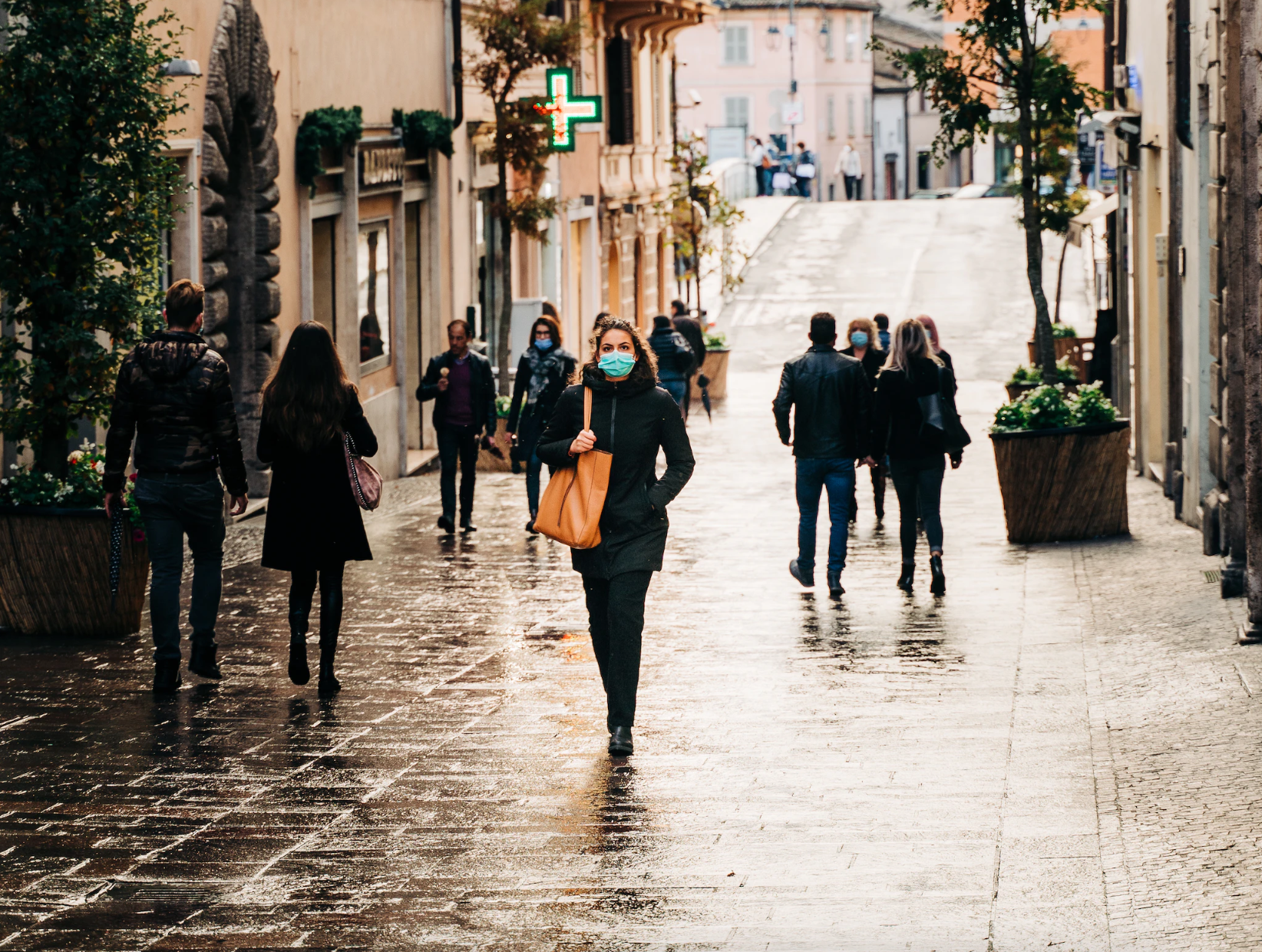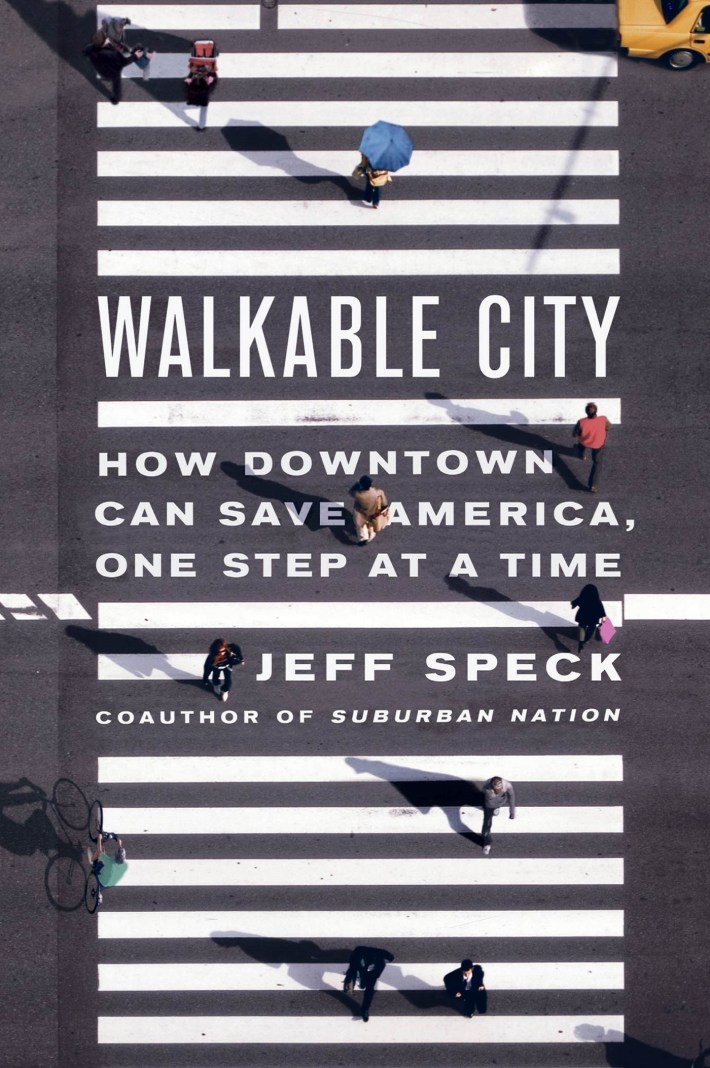Editor’s note: This is an excerpt from Walkable City: 10th Anniversary Edition, an updated version of the best-selling urban planning book of the past decade featuring more than 100 pages of new material. It is republished with permission.
Aside from Zoom — and, of course, mRNA vaccines — the most impactful technology to evolve thanks to COVID was the one at the very heart of Walkable City: street design.
This story has been well told and does not need much elaboration here. Reduced car traffic, increased walking and biking, social-distancing protocols, and a restaurant attrition crisis all combined to accomplish in weeks what many urbanists had been clamoring for, mostly unsuccessfully, for decades. Streets were closed to vehicular traffic. Driving and parking lanes were converted to bike facilities and broader sidewalks. Elaborate roadside “streateries” gave life support to bars and restaurants while bringing new and in some cases unprecedented energy to the public realm. Lots of neighbors complained, but, hey, it was a global health crisis, and bold measures were needed.
Cities and their leaders embraced these changes with different attitudes and aptitudes. My town of Brookline, Massachusetts, was fast out of the gate, turning four-lane Beacon Street into a two-laner, pushing the parking lanes into the street to create a protected bike/stroll zone along the curb; my younger son christened it on a pogo stick. Cambridge, New York City, Milwaukee, Minneapolis, Denver, Seattle, San Francisco, and others also moved quickly. Boston’s mayor, pressured by the city council, eventually made similar changes, to dramatic effect. Hanover Street through the North End — our “Little Italy” — was transformed into the outdoor-dining mecca it always should have been.
Other cities did much less, but most saw the need to keep their merchants alive. One survey of U.S. mayors found that 92 percent had initiated some sort of outdoor-dining program in response to COVID, while almost half had closed some streets to pass-through traffic.
I was one of many planners who sold these Main Street makeovers to cities, pro bono. While I acknowledged other motivations beyond the pandemic for making our streets more livable, I saw the fastest path to the end zone and took it. My line to public officials was that “this public health crisis is at its heart a spatial crisis: the way that space has been allocated in our communities is increasing the spread of the disease.” It mostly worked.
Or did it? Now, as the pandemic is waning, most of these interventions are being ripped out. Brookline’s are long gone. Parking is back on Hanover Street. Some of this is just winter, but most such spaces nationwide are not coming back. Live by the sword, die by the sword: pandemic-justified transformations have no value post-plague. This, despite some surprising data. Research conducted by the City of Yarra, just east of Melbourne, Australia, found that a typical parking spot that had generated $1,050 per month in meter fees was generating $8,940 monthly in additional business revenue when converted into a dining parklet.
Other advocates were more forthright than I. I was afraid of being seen as using a pandemic to push my own agenda. Not so for Paris mayor Anne Hidalgo, who pointed to the cleaner air of a city under lockdown as inspiration for making the changes demanded by the climate crisis. “We could breathe,” she said. “We heard birds. If it could be like this, how pleasant it would be.”
Upon reelection in June 2020, she doubled down on her 870 miles of new bike lanes, removing cars from the Rive Droite and the rue de Rivoli, eliminating tens of thousands of parking spaces, and backing a $300 million plan to turn the Champs-E?lyse?es into a multimodal linear garden. Ah, to be in Paris in the springtime!
Hidalgo, London’s Sadiq Khan, even New York’s (former DOT Commissioner) Janette Sadik-Khan (no relation) made no bones about COVID being a dry run for climate change. “For cities to return to the pre-pandemic status quo would be a historic blunder,” she and Seth Solomonow wrote in The Atlantic. Yet, return we mostly have.
This relapse is cause for frustration and regret. But it should also be cause for anger and action, because it is not what the people want. Back here in Massachusetts, an independent pollster found that, among registered voters, 59 percent favored closing some streets to traffic post-COVID. The poll asked: Would you do these things even if it would result in “less space for cars”? Fully 67 percent of respondents favored giving buses their own lanes; 71 percent favored wider sidewalks; 75 percent favored bike lanes separated from traffic; and 83 percent favored more space for sidewalk dining. Again, post-COVID, instead of space for cars.
If past pandemics are any indication, the coronavirus will release its grip before very long. It’s seemed like forever, and there are many friends to mourn, but we will move on. Meanwhile, global warming remains an epoch-ending existential threat, and traffic violence still kills forty-three thousand and seriously injures 4.4 million Americans each and every year. Most people want change, and we are learning that the only way to get it is to make it ourselves.
Jeff Speck is an urban planner who advocates internationally for more walkable cities. As the former director of design at the National Endowment for the Arts, he oversaw the Mayors’ Institute on City Design, where he worked with dozens of American mayors on their most pressing city planning challenges. A fellow of both the American Institute of Certified Planners and the Congress for New Urbanism, he is the 2022 recipient of the Seaside Prize. His TED talks and YouTube videos have been viewed more than five million times.
Excerpted from WALKABLE CITY: How Downtown Can Save America, One Step at a Time by Jeff Speck. 10th Anniversary Picador paperback edition, 2022. Published by MCD, Picador. Copyright © 2012 by Jeff Speck. Introduction copyright © 2022 by Janette Sadik-Khan. Part III copyright © 2022 by Jeff Speck. All rights reserved.








